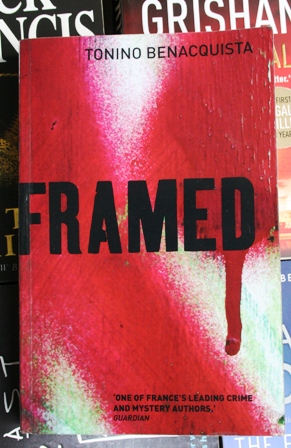
No 2: Framed by Tonino Benacquista
What’s it about?
Antoine Andrieux works days hanging modern art in fashionable Paris galleries but after 6pm he pursues his passion for billiards. As the novel opens he is about to be mentored by one of billiards’ greats but an outlandish incident with a thief and a sculpture changes the track of his life. Antoine’s searches for the perpetrator and for the meaning of a painting called Attempt 30 are metaphors both for Antoine’s search for self and for some point to modern art.
What’s it got to do with leisure?
Put simply, it is about art and about billiards. To expand: Antoine strips art back to its mundanities while raising billiards, the most tawdry of games, into a mix of ballet, painting and poetry. His exploration of both worlds – albeit in Paris – will chime with habitués of both. “I hate that sort of thing, weird objects, African statuettes with personal stereos, toothbrushes mounted on breezeblocks, basketballs in aquariums and all sorts of other stuff. It’s the post-Oxfam effect”, versus “I want the mahogany cue to be an extension of my index finger, I want the balls to take up impossible angles, to obey the most absurd orders, for them to be propelled by remote control by my hand and my will. Billiards is a pure universe: everything becomes possible… and simple.”
Why should I read it?
Wit consists of cramming two unrelated even competing concepts into one phrase or word. When the audience encounters the conceit, the energy binding the incongruity is released and laughter, or at least a wry smile, results. This book forces billiards and art into a whodunit delivered at such a pace that sometimes the translator – or perhaps the writer – misses words and punctuation in his haste to give you the story. Unless, of course, Benacquista deliberately stumbles to give the impression of pace. As an explanation that might seem a little self referential but then this is a very knowing book.
There are no easy givens here – art is not idealised, relationships challenge the norm and the butler didn’t do it – but, for a stream of consciousness novel translated from French, it is an easy read. There are only 198 pages and the plot develops rapidly – Antoine has lost his hand, his job and his life’s passion by the end of chapter one – with characters established economically and deployed as the plot requires. There is little that is sentimental in the novel and the end point is on the bleak side but given that you could read it on the Eurostar the investment required won’t break your emotional bank.
Download a pdf version of this article for printing
the leisure manager’s library
An occasional series offering a guide to leisure-related literature
